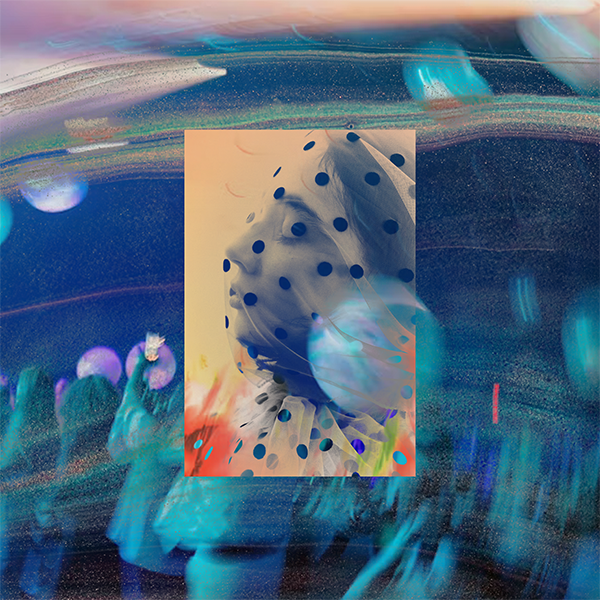Theopoetics: Breathing Fresh Life into Faith Communities (Part 1)
“And how are we like sheep?” asked the pastor at the podium. “Well, if you haven’t had much interaction with sheep, let me tell you that sheep are stupid…”
I felt my daughter stiffen beside me. We had a small flock of 20 sheep at the time and lived about an hour from our suburban church. My daughter used adjectives like alert, attentive, overwhelmed, communal and the like to describe her sheep. She would never have used the pejorative “stupid.” The night after, while my daughter and I sat on the front porch, she told me a story:
…of when she was younger and feeding the sheep their evening hay. And how she called them into the barn and they all came, except for one. So she closed the barn door and went looking for the one that hadn’t come. And because sheep are smart and choose sheltered places when feeling ill, she found him — down, unwell, under the trees, too weak to get up, too weak to call for help. Since my daughter was the shepherdess, she tenderly bent near to him, scooped him up into her arms, and carried him back to the barn.
It was in that moment that she knew deeply that The Shepherd (Luke 15:1-7; John 10:1-21) can never not search for the lost sheep. He must. If the sheep can’t cry out, The Shepherd will come anyways. If the sheep doesn’t know she’s being carried, The Shepherd will carry her anyways. If the sheep doesn’t know she’s being cared for, The Shepherd cares for her anyways.
Listening to my daughter speak so compassionately about her work, I fell in love again with the deep well in this girl and the many mysteries within her. Because of her shepherding experience, she experiences herself in times of crisis not as stupid but simply as overwhelmed; not as a burden, but as the beloved. She understands The Shepherd running to her not out of irritation for another “stupid” mistake, but out of concerned lovingkindness as she continues to grow and learn.
The ancient agrarian metaphor in the Scriptures functioned as intended in my daughter — as a theopoetic that opened a spiritual truth, that invited her to access embodied experiences and ponder the ways the metaphor both fit and did not fit as a description of our relationship with God.
On the other hand, for many people inexperienced with sheep, the metaphor must be explained, which means it ceases to function as a theopoetic. Sally McFague calls this a “dead metaphor” as opposed to a “vital metaphor.”1 With an explained metaphor, the explainer chooses which characteristics to emphasize and which characteristics to ignore. An explained metaphor does not touch our experiential memory, nor does it engage our living. An explained metaphor functions only to help the explainer make a point. It tends to be closed — offering only one way to understand the comparison.
By contrast, a theopoetic invites engagement.
Theopoetics is the study, use and respect for metaphors we use to understand and describe The Holy. It is the spiritual impulse to reach for God, wonder at the vastness and minute details of Life, and make meaning beyond ourselves. Share on X
What is Theopoetics?
Theopoetics is the study, use and respect for metaphors we use to understand and describe The Holy. It is both ancient and new. It is ancient in that theopoetics is a non-creedal knowing, the spiritual impulse within us to reach for God, wonder at the vastness and minute details of life, and make meaning beyond ourselves. These are the stories we tell, the songs we sing, and the art we make. Ancient scripture is filled with metaphor, parable, poetry, image, and song, many of which have theopoetic meaning within them. Similarly, our days overflow with shared stories, conversations around the table, songs on repeat, and viral memes. In these ways, theopoetics is ancient, even timeless, needing surprisingly little explanation.
But theopoetics is also new. In the last fifty years a growing number of people from a variety of backgrounds have begun to study it as a field and discipline serving an important function in faith communities. What do we learn about God and each other when we honor our vital spiritual metaphors? Intentional cultivation of theopoetics in church and faith organizations offers the spaciousness needed for spiritual thriving. This is especially true in times of overwhelming loss or overwhelming joy — these threads connect us to The Sacred and to one another.
Our faith was never meant to be about the metaphors themselves, but about ‘Truths Beyond Our Comprehension.’Discovering relevant metaphors is a key part of living faith. Considering metaphors together, sharing wondering and processing epiphanies, makes healthy and robust faith communities.
///
What do we learn about God and each other when we honor our vital spiritual metaphors? Intentional cultivation of theopoetics in church and faith organizations offers the spaciousness needed for spiritual thriving. Share on X
A few summers ago at the church where I served as Director of Spiritual Formation, many congregants struggled through a hard season. A portion of Psalm 56:8 rolled around inside me: “You have collected all my tears in your bottle” (Psalm 56:8, NLT). I thought perhaps a tangible representation of that verse might help create space for discussion and processing. I called a young glass blower I know and asked him if he could make me a tear catcher. “Maybe,” he replied. “What’s a tear catcher?”
And so began our shared research into the little glass bottles used by a variety of peoples and cultures throughout the centuries. A few weeks later William McBride, young glassblower extraordinaire, showed up at my house with a box of tiny bottles. “I didn’t know how to choose, so I brought what I’ve been working on. You can pick which one you like.” I couldn’t choose either. Each one had its own personality. I took all twelve. The bottles were exhibited in the hallway outside the sanctuary. The exhibit signage included this verse: “I have heard your prayer; I have seen your tears” (2 Kings 20:5).
A few days later, a woman who helps with a mid-week program at our church sent me this email:
At our event last Thursday, a young girl of about 8 or so was dropped off by her dad, and they had some discussion about getting her a snack to eat during break time. She headed off to class, and her dad dutifully purchased a couple of snacks, but then took them to his car to save for her until classes were over. At break time, she came to the snack table expecting to find something waiting and was notably disappointed when she learned what had happened. She went and stood in a corner, and out of the corner of my eye, I could see her slowly crumbling into teary sadness. I went and spoke with her, and we finally agreed that it might help to get a drink of water since she couldn’t have her snack until later.
On the way to the water fountain, she looked up through her tears and saw the tiny glass bottles on their shelves in the hall. “What are those?” she asked. I explained to her what the sign described, and the scripture verse that provided the inspiration. She was instantly captivated by this idea! She got a drink, and came back and looked again as her tears began to dry, wondering aloud:
“I wonder why God wants to collect our tears? Does he save them up and drink them when he gets thirsty? Or maybe he uses them to fill up the clouds to give us rain!”
And in that moment, her small sorrow was turned to wonder at the loving care of our creative God. She ran off refreshed and joyful, and my heart was so thankful for the people who pursue creative expressions of their life and faith.2
We All Have Cried
Our own tears are often a source of mystery for us — why do we sometimes sob uncontrollably over small things, and yet cry only a little over the great traumas of Life? We often cry when we are alone, which makes us feel unseen and unknown, and yet we all know the embodied relief that crying brings, especially in the safe embrace of a loved one. The tear catchers attracted a lot of attention within our faith community, and within a week they had all sold. People who bought them all had intensely personal reasons for their purchase, and some bottles traveled across the country to loved ones who were grieving.
This is one of the ways God uses artisans, and the theopoetic experiences their work creates, to invite us to bring our whole selves and our lived experiences into Beloved Relationship.
The psalmist in Psalm 56:8 uses the image of God catching our tears in a bottle to proclaim God’s holy concern for every person and every moment of our lives. However, it was the connections sparked by these tiny bottles, light captured and refracting in colored glass, and the weight of their meaning that made this exhibit a source of communion with the Divine. It reminded people of their own times of sadness and lonely loss. These tear catchers reminded them that somehow God made God’s presence known in their tears, which in turn reminded them of people they deeply loved who were hurting in this season. As a result of these little bottles, a friend was comforted in their grief, reminded that they were not alone.
///
These tiny bottles, light captured and refracting in colored glass, and the weight of their meaning, made this exhibit a source of communion with the Divine. It reminded people of their own times of sadness and lonely loss. (1/2) Share on X
These tear catchers reminded them that somehow God made God’s presence known in their tears, which in turn reminded them of people they deeply loved who were hurting in this season. (2/2) Share on X
Theopoetics as an embodied practice is large enough to hold both disappointment and curiosity as sacred and important. It offers us a place to pause and wonder. It offers us a way to process with God, to hold divergent possibilities in God’s loving gaze. It is a spacious way of making meaning without rushing to meaning. It does not offer us the answer, but asks instead, “Does this touch something we might like to explore together?”
Theopoetics is an expression of what is happening within your soul without requiring one’s community to take away something specific from what is shared. It provides spaciousness and room to wonder if I have experienced anything similar in my own life, or if I can now feel empathy for someone else’s experience. It allows questions without answering them for us. Theopoetics expands on traditional Christian theology to include how we feel God (not merely how we feel about God), how we experience God, and how we know The Holy deep in our bones. Allowing expression, uncertainty, and unpredictability into safe faith spaces allows the community to wrestle with ideas, disappointments, and grief.
Something that gives us the opportunity to discover the layers of complexity within one another is so valuable in these times of self-selecting social monocultures. Implementing non-judgmental spaces of expression does not mean losing the guardrails in our faith communities. By contrast, exploring and honoring the metaphors that crack us open to The Holy nurtures and deepens our connections to God and to one another.
Theopoetics exists alongside theology. It is actually how we think, speak, and teach about God. Theopoetics creates room for us to encounter The Holy in our deepest places. We must intentionally make room for its practice, and the fresh life it breathes, into our faith communities.
*Editorial Note: Part 2 of Michelle’s piece, “Theopoetics: Breathing Fresh Life into Faith Communities,” published on Thursday, June 13th. It can be read here. ~CK
///
Something that gives us the opportunity to discover the layers of complexity within one another is so valuable in these times of self-selecting social monocultures. It creates room to wonder if I've felt anything similar. (1/2) Share on X
Implementing non-judgmental spaces of expression does not mean losing the guardrails in our faith communities. By contrast, exploring the metaphors of The Holy nurtures and deepens our connections to God and others. (2/2) Share on X
Footnotes
1 Sallie MacFague, Metaphorical Theology: Models of God in Religious Language (Philadelphia, PA: Fortress Press, 1982).
2 Laura Barksdale, personal e-mail message to author, September 25, 2019. Shared with permission.



